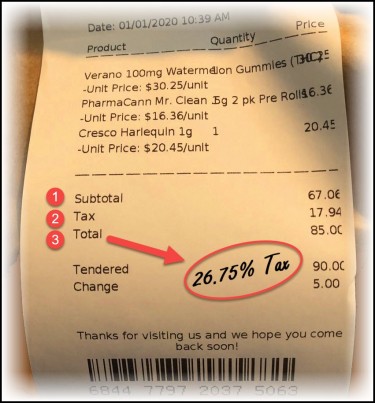Cannabis News
CBD-Rich Extracts Help Mitigate Autism Symptoms in Kids and Teens Says Medical Study
Published
2 months agoon
By
admin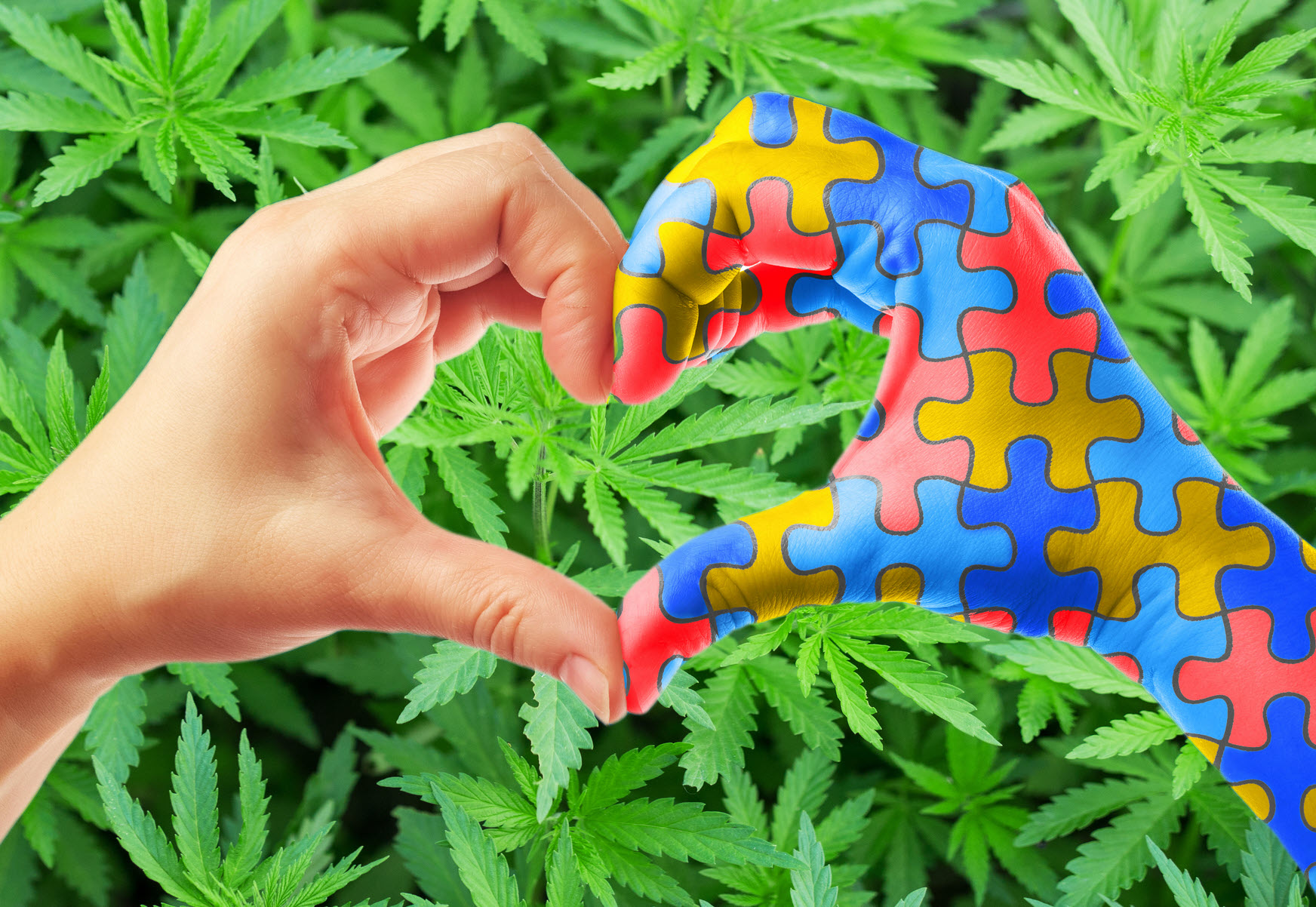
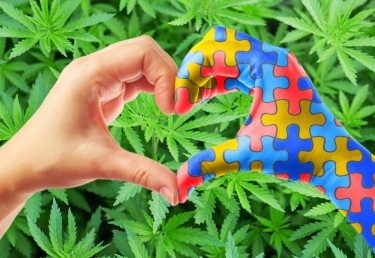
Autism Spectrum Disorder (ASD) is a complex neurodevelopmental condition that affects communication, behavior, and social interaction. With prevalence rates rising globally, there is an urgent need for effective treatments that can help manage the diverse symptoms associated with ASD. Recent studies have begun to explore the potential therapeutic benefits of cannabinoids, particularly Cannabinoids (CBD), a non-psychoactive compound found in cannabis. A groundbreaking observational study conducted in Brazil has provided compelling evidence that CBD-rich extracts may significantly mitigate symptoms in adolescents with autism. This article will delve into the study’s findings, the implications for treatment, and the broader context of cannabinoid research in autism.
Understanding Autism Spectrum Disorder
What is Autism Spectrum Disorder?
ASD encompasses a range of conditions characterized by challenges in social skills, repetitive behaviors, speech, and nonverbal communication. The severity and combination of symptoms can vary widely among individuals, making ASD a spectrum disorder. According to the Centers for Disease Control and Prevention (CDC), approximately 1 in 44 children in the United States is diagnosed with ASD, highlighting the growing public health concern surrounding this condition.
Current Treatment Approaches
Currently, there is no cure for autism, and treatment typically involves a combination of behavioral therapies, educational interventions, and, in some cases, pharmacological approaches. Medications such as selective serotonin reuptake inhibitors (SSRIs), antipsychotics, and stimulants are often prescribed to manage specific symptoms, including anxiety, irritability, and attention deficits. However, these medications can have side effects and may not be effective for all individuals, prompting the search for alternative therapies.
The Role of Cannabinoids in Autism Treatment
What are Cannabinoids?
Cannabinoids are chemical compounds found in the cannabis plant. The two most well-known cannabinoids are tetrahydrocannabinol (THC), which is psychoactive, and CBD, which is non-psychoactive. CBD has garnered attention for its potential therapeutic effects, including anti-inflammatory, anxiolytic, and neuroprotective properties.
The Endocannabinoid System
The endocannabinoid system (ECS) is a complex cell-signaling system that plays a crucial role in regulating various physiological processes, including mood, memory, and immune response. The ECS consists of cannabinoid receptors (CB1 and CB2), endocannabinoids produced by the body, and enzymes that break down these compounds. Research suggests that the ECS may be involved in the pathophysiology of autism, and modulating this system with cannabinoids like CBD could offer new avenues for treatment.
Research on Cannabinoids and Autism
Preclinical Studies
Preclinical studies have provided insights into the potential effects of CBD on behaviors associated with ASD. Animal models have demonstrated that CBD may reduce anxiety-like behaviors and improve social interaction. For instance, research involving rodents has shown that CBD administration can lead to increased social behaviors and decreased anxiety, suggesting that it may help address some core symptoms of ASD.
Clinical Studies
While preclinical research is promising, clinical studies are essential for understanding how CBD-rich extracts may benefit adolescents with ASD. Several recent studies have explored this topic:
-
Brazilian Observational Study (2024)
A landmark observational study conducted in Brazil involved 60 adolescents diagnosed with moderate to severe ASD. Participants were administered CBD-rich extracts for six months. The results were encouraging, with 70% of participants showing clinical improvements in areas such as attention, communication, and overall behavior. Notably, 74% of participants were able to reduce or discontinue at least one prescription medication, highlighting the potential of CBD as an adjunct or alternative treatment.
-
Israeli Open-Label Study
An open-label study conducted in Israel assessed the effects of CBD-rich cannabis treatment on children and adolescents with ASD. The study involved 30 participants who received CBD for six months. Clinical assessments, including the Autism Diagnostic Observation Schedule (ADOS), revealed significant improvements in social communication abilities. Parents reported enhanced social interactions and reduced behavioral issues, suggesting that CBD may positively impact the quality of life for adolescents with ASD.
-
Case Report of a Teenager with ASD
A case report detailed the experience of a teenager with ASD who exhibited aggressive behaviors and hyperactivity. After incorporating a terpene-enriched CBD oil into his treatment regimen, the patient experienced a complete elimination of aggressive behaviors. Remarkably, this allowed for a reduction in his CBD dosage by more than half, indicating that targeted formulations may enhance therapeutic outcomes while minimizing side effects.
-
Italian Observational Study
An observational study conducted in Italy involved 50 children with ASD who received whole-plant cannabis extracts with a 20:1 ratio of CBD to THC. The results indicated that 61% of participants experienced significant improvements in behavioral outbreaks. Parents reported enhanced emotional regulation and decreased aggression, further supporting the potential of CBD-rich extracts in managing challenging behaviors associated with ASD.
Mechanisms Behind CBD’s Therapeutic Effects
The therapeutic effects of CBD-rich extracts in adolescents with ASD may be attributed to several mechanisms:
-
Anxiolytic Properties: CBD has been shown to reduce anxiety in both preclinical and clinical studies. By alleviating anxiety, CBD may help improve social interactions and communication skills in adolescents with ASD.
-
Neuroprotective Effects: CBD’s neuroprotective properties may support brain health and development, potentially benefiting adolescents with neurodevelopmental disorders like ASD.
-
Regulation of Serotonin: CBD may influence serotonin receptors, which play a critical role in mood regulation. This could help address co-occurring mood disorders often seen in individuals with ASD.
-
Reduction of Inflammation: Inflammation has been implicated in various neurodevelopmental disorders. CBD’s anti-inflammatory effects may contribute to improved overall well-being in adolescents with ASD.
Potential Benefits of CBD-Rich Extracts
The studies mentioned above suggest that CBD-rich extracts may lead to significant improvements in behavioral outcomes for adolescents with ASD. Parents and caregivers have reported reductions in aggression, hyperactivity, and self-injurious behaviors, which are common challenges faced by individuals on the autism spectrum.
Social communication is often a significant area of difficulty for adolescents with ASD. The evidence indicates that CBD may help improve social skills and facilitate better interactions with peers and family members. By reducing anxiety and promoting a sense of calm, CBD may create an environment conducive to social engagement.
Anxiety is a prevalent issue among adolescents with ASD. CBD’s anxiolytic properties may help alleviate anxiety symptoms, allowing individuals to navigate social situations with greater ease. This reduction in anxiety can lead to improved overall quality of life and increased participation in social activities.
Many adolescents with ASD experience sleep disturbances, which can exacerbate behavioral issues and impact overall well-being. Preliminary research suggests that CBD may help improve sleep quality by promoting relaxation and reducing anxiety. Better sleep can, in turn, lead to improved mood and behavior during the day.
Ultimately, the goal of any treatment is to enhance the quality of life for individuals with ASD and their families. The positive outcomes reported in studies involving CBD-rich extracts indicate that these therapies may contribute to a better overall quality of life for adolescents with autism. Improved behavior, social interactions, and emotional regulation can lead to more fulfilling relationships and experiences.
Considerations for Use
Safety Profile of CBD
One of the significant advantages of CBD-rich extracts is their safety profile. Unlike many psychiatric medications, which can have a range of side effects, CBD is generally well-tolerated. Common side effects, when they occur, may include fatigue, diarrhea, and changes in appetite. However, these effects are typically mild and transient.
Dosage and Administration
Determining the appropriate dosage of CBD for adolescents with ASD can be challenging, as individual responses can vary widely. Most studies have used a range of dosages, and it is essential for caregivers to work closely with healthcare professionals to establish a suitable regimen. Starting with a low dose and gradually increasing it while monitoring for effects is often recommended.
Legal and Regulatory Considerations
The legal status of CBD varies by region, and caregivers should be aware of the regulations governing its use. In many places, CBD derived from hemp (containing less than 0.3% THC) is legal, while cannabis products containing higher THC levels may be subject to stricter regulations. It is crucial for families to ensure they are obtaining CBD products from reputable sources that provide third-party lab testing to verify purity and potency.
Integration with Other Treatments
CBD should not be viewed as a standalone treatment for ASD but rather as a potential adjunct to existing therapies. Families should work with healthcare providers to integrate CBD into a comprehensive treatment plan that may include behavioral therapies, educational support, and other interventions.
The Future of Cannabinoid Therapy in Autism
The promising results from the Brazilian study may pave the way for broader acceptance of cannabinoid therapies in autism treatment. As public interest in alternative therapies rises, healthcare providers and researchers must collaborate to ensure that patients receive safe, effective, and evidence-based treatments.
Conclusion
The evidence supporting the use of CBD-rich extracts for mitigating symptoms in adolescents with autism is promising. While more research is needed to establish definitive conclusions, existing studies suggest that CBD may improve behavioral outcomes, enhance social interactions, reduce anxiety, and ultimately improve the quality of life for adolescents with ASD.As families consider CBD as a treatment option, it is essential to approach it with careful consideration, working closely with healthcare professionals to create a personalized and comprehensive treatment plan. The journey toward finding effective interventions for adolescents with autism can be challenging, but the potential of CBD-rich extracts offers hope for many families seeking relief from the symptoms of this complex disorder.
In summary, while CBD is not a cure for autism, it represents a significant step forward in the search for effective therapies that can help individuals with ASD lead happier, more fulfilling lives. As research continues to unfold, the future looks promising for the integration of CBD into the broader spectrum of autism treatments.
CANNABIS AND AUTISM, READ ON…
You may like
-


HHC vs. Delta 9: Differences & Similarities
-
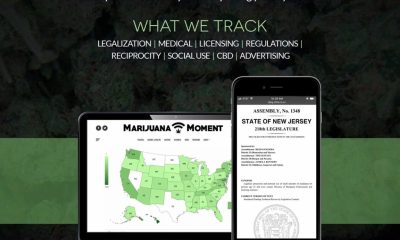

DOJ Asks Federal Court To Deny Doctors’ Lawsuit Over Marijuana Rescheduling Hearing To Avoid ‘Undue Delay’
-


What Federally Illegal Drug Has Created Almost $10 Billion in Sales Tax Revenue for States in the Last 40 Months?
-


Three Wise Men Give Marijuana Strain Gift Suggestions
-


Tasmanian Hemp Assoc Bids Goodbye To Australian Hemp Council
-


Teen Marijuana Use Continues To Drop With Legalization
Cannabis News
HHC vs. Delta 9: Differences & Similarities
Published
18 hours agoon
December 20, 2024By
admin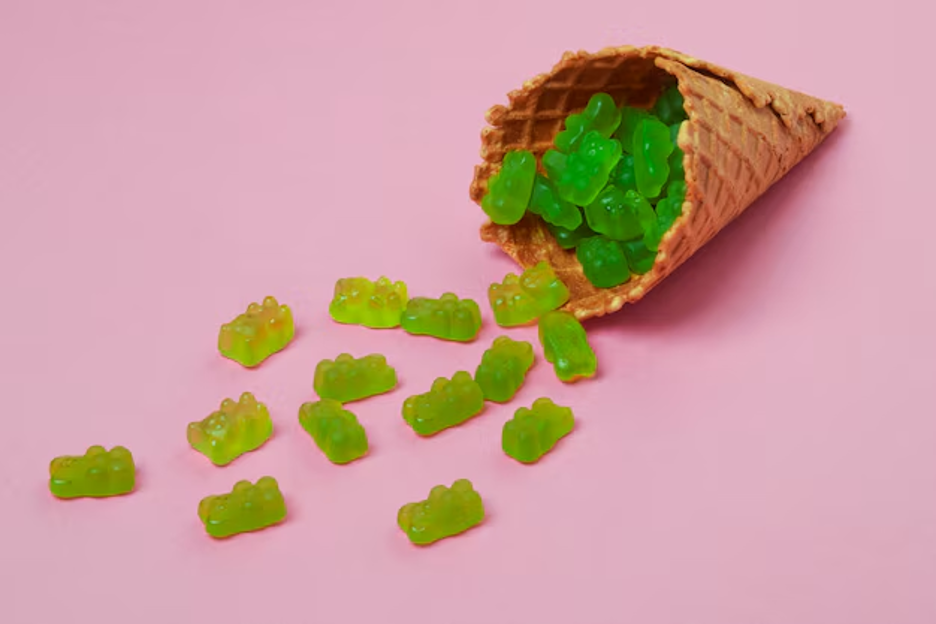

Cannabis has so many compounds, and two that have been making the rounds lately are HHC and Delta 9 THC. They’re not the same thing, even though they’re both cannabinoids that interact with the body’s endocannabinoid system. Some people want a mild, steady experience, while others might be looking for something more intense. Understanding these two can help you figure out what’s right for you.
What Is HHC?
HHC, short for hexahydrocannabinol, is a hydrogenated version of THC. It’s not something you’d find naturally in large amounts in cannabis plants. Instead, it’s made through a process that adds hydrogen molecules to THC. The result? A more stable compound that’s less prone to breaking down when exposed to heat or UV light.
How HHC Is Made
Think of it like a science experiment. HHC is usually created in a lab by taking Delta 9 or Delta 8 THC and using hydrogenation—basically, combining it with hydrogen under pressure and in the presence of a catalyst. This process changes its structure while keeping its effects somewhat similar to THC.
Common Uses and Effects of HHC
People who use HHC say it’s somewhere between Delta 8 and Delta 9 in terms of effects. It’s often described as relaxing but without being overly sedative. You might feel a light buzz, reduced stress, or mild euphoria. Some even claim it helps with discomfort or improving sleep, but solid research is still catching up. Since it’s less potent than Delta 9, it’s often favored by those who want a manageable experience without the strong psychoactive punch.
If you’re interested in trying HHC and Delta 9 for yourself, check out their wide range of products at trycandycloud.com. They’ve got everything from gummies to disposable vapes, all crafted for a smooth experience.
What Is Delta 9 THC?
Delta 9 THC is the main psychoactive compound in cannabis. It’s the reason you feel “high” when you use weed. Chemically speaking, Delta 9 has a double bond in its ninth carbon chain, which plays a big role in how it interacts with your brain.
Natural Occurrence in Cannabis
This one is straightforward: Delta 9 is found in high concentrations in marijuana plants. It’s what most people think of when they hear “THC.” Unlike HHC, there’s no need for a lab process—it’s already there. Hemp plants, however, contain much lower levels of Delta 9 THC, which is why it’s primarily extracted from marijuana.
Common Uses and Effects of Delta 9 THC
The effects of Delta 9 are well-documented. Depending on the dose, you might feel euphoria, increased appetite, or deep relaxation. For medical users, it’s often used to manage chronic pain, nausea, and other conditions. It’s also been studied for its potential benefits in anxiety relief, though higher doses might have the opposite effect, causing paranoia. Delta 9 THC is versatile, but it’s not without its risks, particularly for new users or those sensitive to its psychoactive effects.
Key Differences Between HHC and Delta 9 THC
Chemical Structure and Composition
The main difference is in their structure. Delta 9 THC has that iconic double bond, while HHC’s hydrogenation makes it more stable. This difference might not mean much to the average person, but it’s why HHC is less likely to degrade over time.
Potency Levels
Delta 9 THC is generally more potent. HHC might require a higher dose to get a comparable effect, but some people prefer its lighter touch. Potency differences can also depend on the method of consumption, with edibles typically providing a stronger, longer-lasting effect compared to vaping or smoking.
Duration of Effects
Both last a few hours, but some users report that HHC’s effects fade more gradually. Delta 9, on the other hand, can have a sharper comedown. HHC’s gradual fade makes it appealing for those who want a smooth end to their experience.
Benefits and Drawbacks of HHC and Delta 9 THC
HHC: Pros and Cons
Pros:
- More stable, so it lasts longer on the shelf.
- Effects are milder, making it less overwhelming for beginners.
- Can be a functional option for daytime use.
Cons:
- Limited research, so we don’t know its full impact yet.
- Availability can be hit or miss depending on where you live.
- Legal gray area in many regions.
Delta 9 THC: Pros and Cons
Pros:
- Well-studied with established medical uses.
- Widely available in areas where cannabis is legal.
- Stronger effects make it ideal for experienced users or those with high tolerance.
Cons:
- Higher chance of side effects like anxiety.
- More likely to show up on drug tests.
- Shorter shelf life compared to HHC.
Frequently Asked Questions (FAQ)
Q. Is HHC safer than Delta 9 THC?
Not enough research exists to say definitively, but HHC’s milder effects might make it feel safer to some users.
Q. Will HHC or Delta 9 THC show up on a drug test?
Yes, both can potentially show up on a drug test, so use with caution if that’s a concern.
Q. Which one is better for recreational use?
That depends on your preferences. HHC is great for a mellow time, while Delta 9 is better if you’re looking for something more intense.
HHC vs. Delta 9: Choosing the Right One for You
The choice comes down to what you’re after. If you want a milder, more laid-back experience, HHC might be a good option. On the other hand, if you’re looking for something stronger or need it for medical reasons, Delta 9 is the way to go. It also depends on what’s legal and available where you are. And always consider your tolerance levels and experience before diving in. If you’re unsure, consult with a knowledgeable dispensary staff.
Resources:
Cannabis News
What Federally Illegal Drug Has Created Almost $10 Billion in Sales Tax Revenue for States in the Last 40 Months?
Published
1 day agoon
December 20, 2024By
admin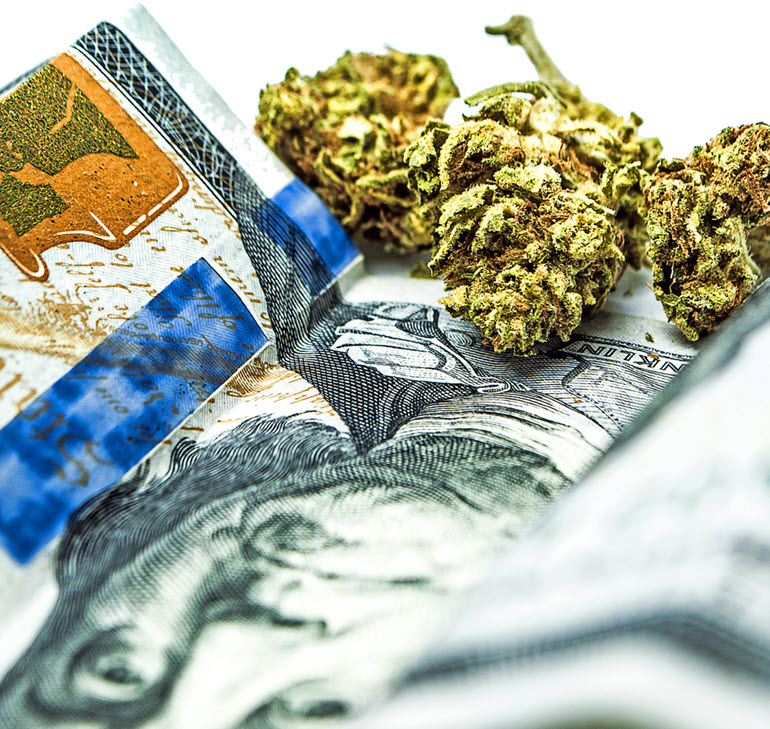
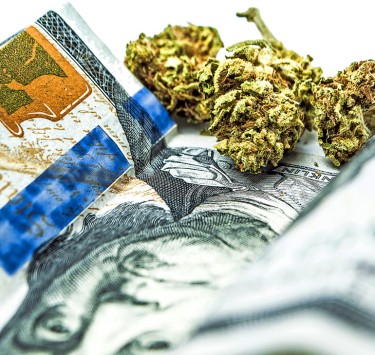
In a significant development for the burgeoning cannabis industry, the U.S. Census Bureau has reported that states across the nation have collectively amassed over **$9.7 billion** in tax revenue from marijuana sales since mid-2021. This figure underscores the economic impact of legalized cannabis and highlights the growing acceptance of marijuana as both a recreational and medicinal substance in various states. As more states move toward legalization, the financial implications both positive and negative are becoming increasingly evident.
The Landscape of Cannabis Legalization
The journey toward cannabis legalization in the United States has been long and complex. Initially criminalized in the early 20th century, cannabis began to regain acceptance in the late 20th century, particularly for medical use. The first state to legalize medical marijuana was California in 1996, setting a precedent that many states would follow.
By 2012, Colorado and Washington became the first states to legalize recreational cannabis, paving the way for a wave of legalization efforts across the country. As of now, more than 20 states have legalized recreational marijuana, while over 30 states allow medical use. This shift reflects changing public attitudes toward cannabis and recognition of its potential benefits.
Economic Implications of Legalization
The legalization of cannabis has not only transformed social norms but has also created a substantial economic impact. States that have embraced legalization have seen significant increases in tax revenue, job creation, and investment opportunities.
According to the latest Census Bureau report, states like California, Colorado, Illinois, and Michigan have emerged as leaders in cannabis tax revenue generation. These states have implemented various tax structures on marijuana sales, including excise taxes, sales taxes, and local taxes. The revenue generated is often earmarked for essential public services such as education, healthcare, infrastructure improvements, and drug rehabilitation programs.
Breakdown of Tax Revenue by State
As the largest legal cannabis market in the United States, California has been at the forefront of marijuana tax revenue generation. Since mid-2021, California has contributed approximately $2.5 billion to state coffers from cannabis taxes. This revenue is derived from both recreational and medical marijuana sales.
California’s tax structure includes a 15% excise tax on retail sales, along with local taxes that can vary significantly by city and county. The state has allocated a portion of these funds to various programs aimed at addressing issues related to drug abuse and public health.
Colorado was one of the pioneers in cannabis legalization and continues to serve as a model for other states. Since mid-2021, Colorado has generated around $1.8 billion in tax revenue from marijuana sales. The state imposes a 15% excise tax on wholesale marijuana transactions and a 2.9% sales tax on retail sales.
The revenue generated from cannabis taxes has been instrumental in funding education initiatives through the Public School Fund, as well as supporting mental health programs and substance abuse treatment services.
Illinois has seen remarkable growth in its cannabis market since legalizing recreational use in January 2020. In just two years, Illinois has collected approximately $1 billion in tax revenue from marijuana sales. The state imposes a tiered excise tax based on the potency of the product, ranging from 10% to 25%.
The funds collected are allocated to various initiatives, including community reinvestment programs aimed at addressing social equity issues related to past drug enforcement practices.
Michigan’s cannabis market has also flourished since legalization. Since mid-2021, Michigan has generated about $700 million in tax revenue from marijuana sales. The state’s tax structure includes a 10% excise tax on recreational marijuana and a 6% sales tax.
The revenue is utilized for various purposes, including education funding and support for local governments impacted by legalization.
Broader Economic Impact
The legalization of cannabis has led to significant job creation across various sectors. According to industry reports, the legal cannabis market supports hundreds of thousands of jobs nationwide—from cultivation and processing to retail and distribution. As more states legalize marijuana, this trend is expected to continue.
With the growth of the legal cannabis industry comes increased investment opportunities. Entrepreneurs are entering the market at an unprecedented rate, leading to innovations in product development, marketing strategies, and distribution channels. This influx of investment not only benefits individual businesses but also stimulates local economies.
Social Equity Considerations
While the financial benefits of cannabis legalization are clear, it is essential to address social equity issues that arise alongside this new industry. Many states have recognized that communities disproportionately affected by past drug enforcement policies should benefit from legalization efforts.
States like Illinois have implemented community reinvestment programs that allocate a portion of cannabis tax revenues to support communities impacted by previous drug laws. These funds can be used for education initiatives, job training programs, and mental health services—aiming to rectify historical injustices associated with cannabis prohibition.
In addition to financial support for communities affected by past policies, some states are also working to create equitable licensing opportunities for individuals from those communities. By prioritizing applications from minority-owned businesses or those directly impacted by previous drug laws, states can foster a more inclusive cannabis industry.
Challenges Ahead
Despite the significant progress made through legalization efforts, challenges remain on both state and federal levels.
Federal Legalization Uncertainty
One major hurdle is the ongoing conflict between state and federal laws regarding cannabis. While many states have legalized marijuana for recreational or medical use, it remains classified as a Schedule I substance under federal law. This discrepancy creates complications for businesses operating legally at the state level but facing potential federal prosecution.
Efforts toward federal legalization or decriminalization have gained traction recently; however, progress remains slow due to political divisions and differing opinions on drug policy reform.
Regulatory Hurdles
As more states enter the legal cannabis market, regulatory frameworks must evolve to ensure consumer safety while promoting fair competition among businesses. States face challenges related to product testing standards, labeling requirements, advertising restrictions, and taxation policies that can impact market dynamics.
Conclusion
The U.S. Census Bureau reports that states have collected over $9.7 billion in marijuana tax revenue since mid-2021, highlighting the significant economic impact of cannabis legalization. As public acceptance grows, more states are likely to pursue legalization. Despite ongoing challenges, including federal regulations and social equity issues, legalized cannabis is poised to remain a vital part of state economies. Collaboration among government officials, business leaders, and community advocates will be essential for fostering an equitable and sustainable cannabis industry. This evolving landscape not only presents economic growth opportunities but also addresses historical injustices tied to drug policy enforcement, shaping the future of cannabis legislation in the U.S.
WHAT STATES HAVE THE HIGHEST WEED TAXES? READ ON…
Cannabis News
Oregon Cannabis: State of the State (2024)
Published
2 days agoon
December 19, 2024By
admin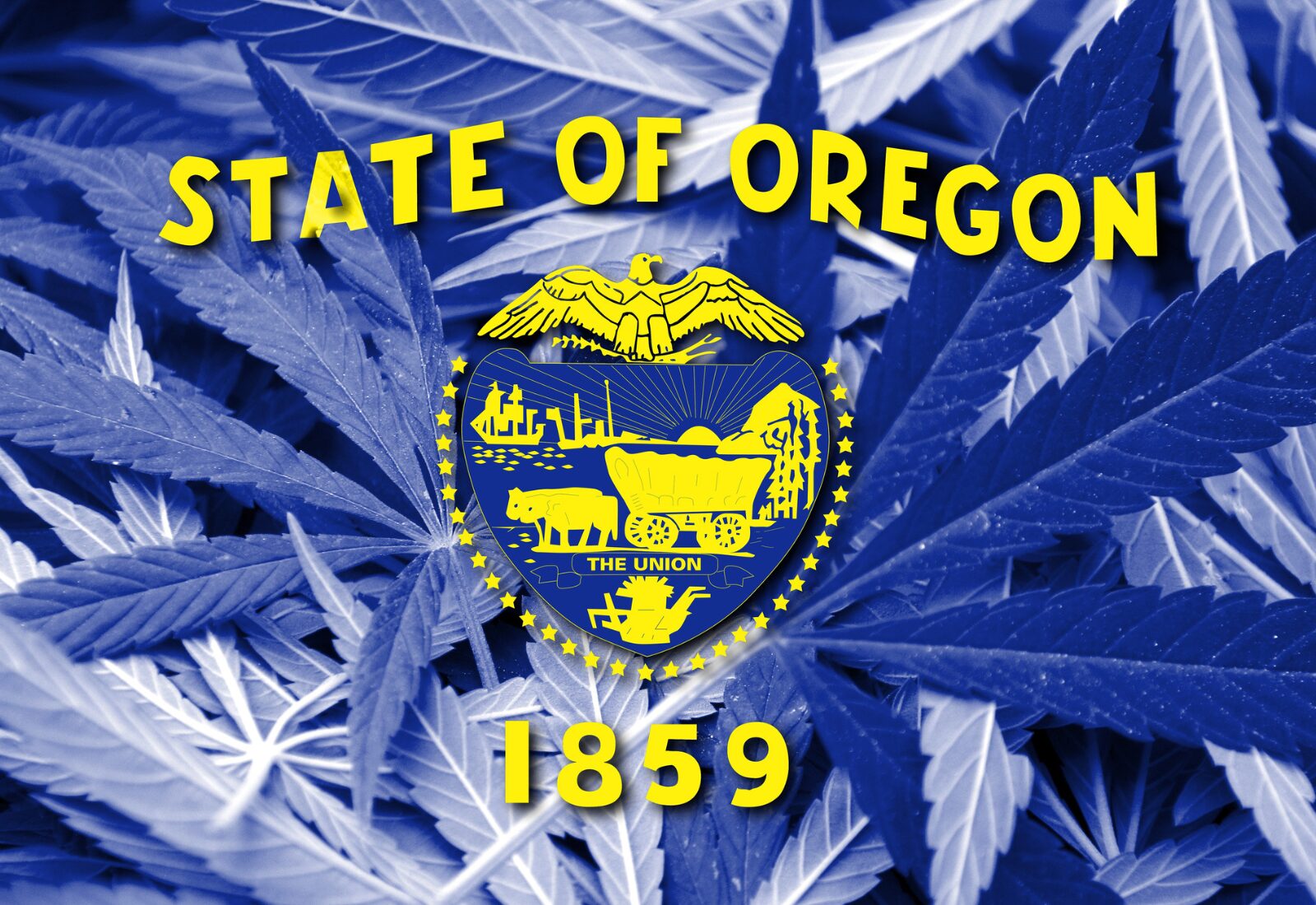
Welcome the ninth annual “State of the State” post on Oregon cannabis. I feel like an old man. As compared to 2023, things this year were pretty mellow. That’s not to say, however, that we don’t have trends, intrigues, controversies, mysteries, etc., worth writing about. Let’s dive right in.
Sales and market data
According to OLCC data, retail sales between January 1, 2024 and November 30, 2024 clocked in at $881 million. That is remarkably consistent with 2023, where we saw $874 million over the same 11-month span. If things remain steady for the next couple of weeks, Oregon should avoid a third consecutive drop in annual sales.
Prices are also relatively static. The median price per gram in the extract/concentrate category was $15.83/gram in November, floating from $15.36 to $16.00 throughout the year. For “usable marijuana”, which includes dried flowers and leaves, prices fluctuated from $3.89/gram to $3.57/gram last month.
October saw Oregon’s largest METRC harvest, ever, with 5,733,288 pounds reported. I’m sure the illicit market had a bumper year too; weather is the same for everyone and the enforcement paradigm is static. Anyway, the October numbers equal 900,000 more pounds than the same month in 2023. Consumers may benefit, but that can’t be great for pricing.
As far as what people are actually buying at OLCC shops:
- 2% of purchases are for usable marijuana
- 25% are extracts/concentrates
- 7% are edibles/tinctures
- 10% are “inhalable product with non-cannabis additives”
- 4% is “other”; and
- 6% is industrial hemp commodity products.
Yes, that equals 100%. In 2023, I noted a “years-long trend of usable marijuana sales decreasing per capital in favor of other categories.” The trend continued in 2024 (usable marijuana sales dropped another 2.5% year over year). Last year, I wrote that “my impression is that near-term growth may be limited to select SKUs and product categories.” Still feel that way.
Licenses and licensing
Our years-long OLCC licensing moratorium was made permanent in 2024 (more on that below). Overall, license numbers declined marginally across the board. Here’s a table showing current numbers as compared to 2023, which I wrote “was the first year I saw license numbers fall since the 2016 roll-out of the adult use program.”
| 2024 | 2023 | Change | |
| Producers | 1,375 | 1,389 | -14 |
| Processors | 288 | 312 | -24 |
| Wholesalers | 257 | 269 | -12 |
| Retailers | 789 | 818 | -29 |
| Labs | 13 | 15 | -2 |
| Research | 1 | 1 | none |
It’s good to see numbers dropping, I suppose. Most would agree that we have too many licenses across all categories– except perhaps for labs and research. Expect numbers to continue on a modest downward trend in 2025.
Industry limping along
In the last few State of the State posts, I’ve talked about businesses struggling. We’re still helping people sell or even walk away from things we helped them buy not long ago. In 2023, the big liquidation story was the Chalice receivership. In 2024, insolvency and cannabis receivership actions are still a regular occurrence. The largest of 2024 was the Tumalo receivership, which we structured here in the office, and which remains ongoing. We’re working on a few others as well: some are voluntary, and others, well, not so much.
Consolidation is still a fact of life in Oregon cannabis, with larger operators opportunistically picking up assets, mostly at retail. A majority of buy/sell transactions, however, seem to involve new market entrants and naked licenses. In these deals, a seller will relinquish its rights to an OLCC license in favor of a replacement license for the buyer— sometimes at the same location and sometimes in a new spot. Pricing on these transactions, which are styled as asset purchase agreements, has remained steady in each license class. That said, pricing can be negotiable.
Most of the bigger players are still around. A couple of people have asked me how that could be the case with a chain like La Mota, whose legal issues metastasized into a statewide controversy, and resulted in unwelcome tax compliance rules for OLCC retailers. The answer is simple: La Mota probably reached a deal on payment plan with the Department of Revenue. Elsewhere, we haven’t seen anything to convince us, one way or the other, that OLCC is making an effort to treat small businesses the same as the larger operators— a problem area we highlighted in 2023. That said, let’s see what happens with the labs.
OLCC chasing testing labs on THC inflation
On September 25th, OLCC sent enforcement notices to seven testing laboratories. I explained at the time that OLCC had:
Propos[ed] license cancellation in some cases and suspension or fines in others. The notices center on alleged THC inflation, and extend back to instances identified in 2023. We only have eleven labs in Oregon accredited to do this mandatory work, so OLCC chasing seven of them is a big deal.
This saga is still ongoing, and none of these cases are resolved to my knowledge. For considered and lawyerly reasons, I’ll reserve further comment on this one, beyond all that I’ve already said.
New OLCC rules and legislative changes
Various rules took effect in 2024, due to legislative changes this spring and an initiative vote in the fall. Here are the four biggest developments for me, in chronological order:
Licensing Moratorium
Oregon finally made its licensing moratorium permanent, when Governor Kotek signed House Bill 4121 on March 20, 2024. This means the only way to acquire a cannabis license in Oregon is to find someone willing to sell. That will likely be the case forever, based on unreachable “new license triggers” in HB 4121, and the fact that the legislature won’t reverse this new law.
Hemp Vendor License Requirement
This one took effect July 1. At that time, I wrote that the rule was “very broad and likely to catch people off guard.” That proved to be the case in my experience, including with respect to OLCC— I ended up writing them on September 30 after stumbling across incorrect FAQs on the topic. My guess is that a large number of Oregon businesses are still unaware of the license requirement, and therefore not compliant, and that it doesn’t really matter because enforcement is sparse or nonexistent.
Labor Peace Agreements
This one has been a scramble, with many licensees having to find a way to comply on short notice. The short story is that due to Ballot Measure 119, which passed in November, all OLCC licensed retailers, processors and labs must provide a signed labor peace agreement (LPA) with a bona fide labor organization, to renew or apply for an OLCC license. I still believe BM 119 is legally problematic, but someone needs to challenge it to obviate the LPA requirement.
Presumptive Hemp Testing Rules
The Oregon Department of Agriculture (ODA) issued a temporary administrative order following on HB 4121, which defines presumptive marijuana under its testing rules, outlines procedures for marijuana disposal, and outlines violations of ODA hemp licensure more generally.
__
We can expect to see more changes, as always, in 2025. OLCC is currently in rulemaking to implement HB 4121, to start. The 2025 legislative session next year is also a long one, lasting from January to June. I’ll write my usual session preview sometime in January, lest this post become extremely long. For now, the Cannabis Industry Alliance of Oregon (CIAO) has listed out is legislative priorities here.
Odds and ends
- 2024 must have been a welcome reprieve for OLCC, which remained mostly out of the spotlight after a trying year in 2023.
- Not much is going on with ODA and the hemp industry, beyond what I mentioned above.
- Shout-out to CIAO, which was organized and effective in its first full year as Oregon’s consolidated, cannabis trade group.
- Local cannabis banking is getting easier all the time. Most recently, we built out a cannabis banking program for Central Willamette Credit Union, the newest Oregon service provider.
- I’m still pessimistic about a federal cannabis banking bill, but I’m hopeful for federal rescheduling. A move for marijuana to Schedule III would do away with punitive tax code provision IRC § 280E – hopefully in calendar year 2024. That development would immediately increase margins for Oregon cannabis businesses, across the board.
- Also at the federal level, this was our last year with Earl Blumenauer, Congress’s greatest ever cannabis advocate.
Oregon cannabis: that’s a wrap
Let me know in the comments if you think I missed anything worth mentioning, or shoot me an email. There is always something. In the meantime, here’s hoping for smooth sailing for Oregon cannabis in 2025.
For previous posts in this series, check out the following:

HHC vs. Delta 9: Differences & Similarities
DOJ Asks Federal Court To Deny Doctors’ Lawsuit Over Marijuana Rescheduling Hearing To Avoid ‘Undue Delay’

What Federally Illegal Drug Has Created Almost $10 Billion in Sales Tax Revenue for States in the Last 40 Months?

Three Wise Men Give Marijuana Strain Gift Suggestions

Tasmanian Hemp Assoc Bids Goodbye To Australian Hemp Council

Teen Marijuana Use Continues To Drop With Legalization

The Best Cocktails To Make You Feel Festive

Cannabis predictions for 2025: Low prices, high taxes, and hash

Oregon Cannabis: State of the State (2024)

Are MSOs Just Big Pharma on Steriods?

Distressed Cannabis Business Takeaways – Canna Law Blog™

United States: Alex Malyshev And Melinda Fellner Discuss The Intersection Of Tax And Cannabis In New Video Series – Part VI: Licensing (Video)

What you Need to Know

Drug Testing for Marijuana – The Joint Blog

NCIA Write About Their Equity Scholarship Program

It has been a wild news week – here’s how CBD and weed can help you relax

Cannabis, alcohol firm SNDL loses CA$372.4 million in 2022

A new April 20 cannabis contest includes a $40,000 purse

Your Go-To Source for Cannabis Logos and Designs

UArizona launches online cannabis compliance online course
Trending
-

 Cannabis News2 years ago
Cannabis News2 years agoDistressed Cannabis Business Takeaways – Canna Law Blog™
-

 One-Hit Wonders2 years ago
One-Hit Wonders2 years agoUnited States: Alex Malyshev And Melinda Fellner Discuss The Intersection Of Tax And Cannabis In New Video Series – Part VI: Licensing (Video)
-

 Cannabis 1012 years ago
Cannabis 1012 years agoWhat you Need to Know
-

 drug testing1 year ago
drug testing1 year agoDrug Testing for Marijuana – The Joint Blog
-

 Education2 years ago
Education2 years agoNCIA Write About Their Equity Scholarship Program
-

 Cannabis2 years ago
Cannabis2 years agoIt has been a wild news week – here’s how CBD and weed can help you relax
-

 Marijuana Business Daily2 years ago
Marijuana Business Daily2 years agoCannabis, alcohol firm SNDL loses CA$372.4 million in 2022
-

 California2 years ago
California2 years agoA new April 20 cannabis contest includes a $40,000 purse





